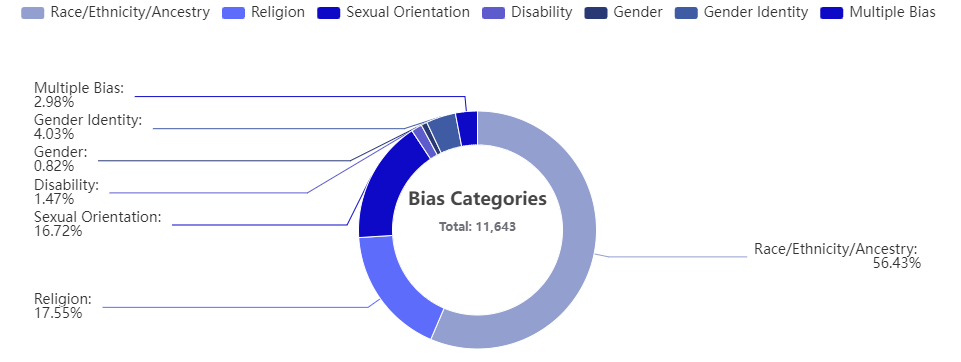According to FBI Data, U.S. Was Less Violent in 2022 than 2021
The U.S. Federal Bureau of Investigation (FBI) released its crime data report for 2022, which compiles crime statistics from 13,293 law enforcement agencies across the country.
Overall, violent crime decreased by 1.7 percent in 2022 compared to 2021. Murder and nonnegligent manslaughter decreased 6.1 percent, and rape decreased 5.4 percent. However, hate crimes increased slightly, by 0.5 percent. Also, violent crime at colleges and universities increased 13.3 percent—though it should be noted that many college campuses were either closed for the Spring 2021 semester or operated with reduced students attending classes in-person.

The FBI data also examined gun violence. Fatal incidents resulting from gun violence decreased 5.2 percent from 2021 to 2022; however, the number of juvenile victims of fatal gun violence increased from 1,300 to 1,500. While most fatal incidents involved only a single victim (68 percent), 7.1 percent had four or more victims. Nonfatal violent offenses involving guns increased 0.9 percent from 2021 to 2022—half of them involved only one victim, but 18 percent had four or more victims.
The report shows a continued transition to the NIBRS reporting system. The change in reporting systems caused significant issues in previous years, particularly in accurately counting hate crimes (the FBI issued an update after its initial findings of 2021 data, resulting in a dramatic change to trend in hate crimes).
The number of hate crime offenses increased from 12,411 in 2021 to 13,337 in 2022. Of those, the vast majority were less severe offenses—77 percent of hate crimes were classified as either intimidation, simple assault, or destruction/damage/vandalism. Just 0.8 percent of hate crimes were in the most violent classifications of arson, murder and nonnegligent manslaughter, rape, and human trafficking.
Most of the hate crime offenses were single-bias incidents, with the race/ethnicity/ancestry bias category (58 percent of the total single-bias incidents) by far outpacing other categories. Religious bias was the reported motivation in 18 percent, and 21 percent fell into either the sexual orientation or gender-identity bias categories.

Property crime, which the FBI defines as burglary/breaking and entering, larceny theft, and motor vehicle theft, increased 7.1 percent, driven mostly by increases in larceny theft (increase of 7.8 percent) and motor vehicle theft (increase of 10.9 percent). While law enforcement clearance rates, or the percent of crimes solved, was at 33 percent for violent crime, that number plummets to 11 percent of property crime—both numbers essentially unchanged from 2021 to 2022.
Burglaries at what the FBI categorizes as nonresidences rose sharply, from 292,864 incidents in 2021 to 398,414 in 2022, an increase of 36 percent. Shoplifting incidents saw an even sharper increase, from 601,148 to 921,504, a jump of 53 percent.
The FBI’s Crime Data Explorer enables more granular level exploration of data, including dataset comparisons going back years and years as well as comparisons by state, age, and other demographics.











